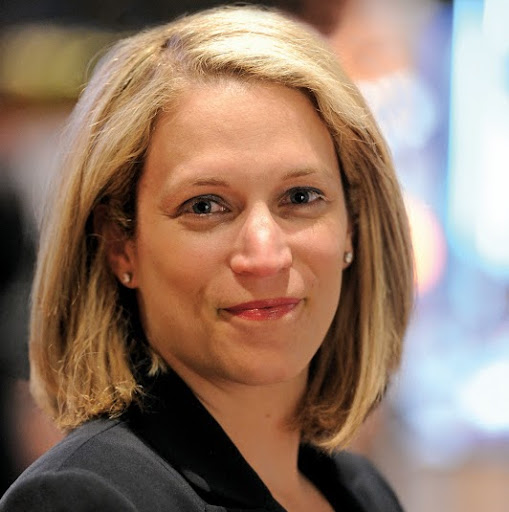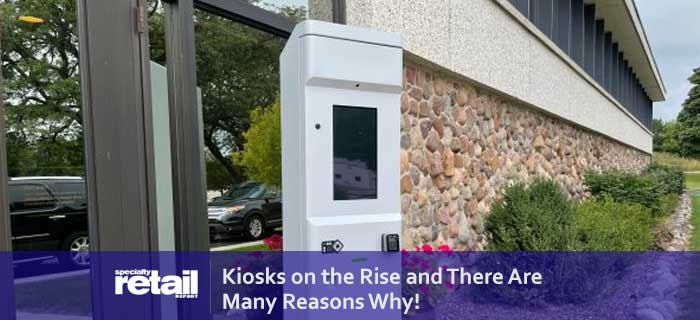An increase in kiosks in the Specialty Retail industry gives retailers increased space to sell more products and a plethora of merchandising options.
Every year, Specialty Retail Report receives hundreds of entries from around the world. These are for our annual visual merchandising recognition program, Visual Victories. These entries represent a broad range of product categories and types of units—RMUs, kiosks, and temporary stores. They give us a unique vantage point to observe industry trends.
As the submissions have flooded in over the last few weeks, our team has noticed an interesting trend. There are now more kiosk entries than ever before. This increase mirrors a corresponding rise in kiosks in the field.
On a recent mall tour in Miami, we were surprised by the almost overwhelming increase in kiosk units. I set out to talk to both retailers and mall developers to confirm the rise in kiosks’ popularity. These discussions revealed the exciting benefits and some challenges associated with designing an effective retail kiosk.
First, what is the difference between an RMU and a kiosk?
Sharon Loeff, Specialty Retail Consultant at Shopworks, Inc. in Scottsdale, AZ, says, “An RMU (retail merchandising unit) is a piece of equipment that evolved from the standard 3’x6? pushcart. It’s a freestanding unit.”
Today’s RMUs are usually supplied by the developer, measuring 4’x6’, 4’x7’, 5’x8’, and 5’x5’. A kiosk has traditionally been a unit with a larger footprint, comprising separate fixtures specific to retail use. Historically kiosks have been worked from the interior, but designs have evolved into open walk-through configurations. The retailer is usually responsible for buying the kiosk unit.”
Arleen Dalton, Vice President of General Growth Properties, explains kiosks’ increasing popularity. He says, “We see retailers requesting larger units because this larger footprint is conducive to more sales, branding opportunities and diversity in the common area. From the developer perspective, it allows us to create a sense of ‘place’ for customers.”
Dalton adds that GGP and kiosk retailers are working together to add exceptional customer amenities near the kiosks. There are seating areas and phone-charging stations. These encourage customers to stay in the area longer, take a break, and then shop again.
Biting Into Food
Dalton says that she has observed an uptick in food-based kiosks. “The advantages we see for retailers to sell from kiosks include adding unique uses such as food that would not work from an RMU,” she says.
During her travels over the last six months, she has seen many food concepts executed on kiosks: meatballs, cupcakes, frozen yoghurt, smoothies, salads, sushi, popcorn, pretzels, and even a cronut (a cross between a croissant and a doughnut) kiosk.
Karen Larson, Director of Specialty Leasing for Urban Retail Properties, LLC, says she, too, has seen many more food kiosks popping up at Urban Retail Property’s centres. “We have a lot of permanent retailers coming out of food courts into the common areas on kiosks. Kiosks offer the advantage of 360-degree visual for customers walking by,” Larson says.
Additional Space
Kiosks also provide retailers with a larger footprint, enabling them to increase sales. Sal Babbino, co-owner of NYS Collections, says, “As a company, we are evolving from RMUs into more custom kiosks.”
He explains that a kiosk helps sell three different price points of sunglasses more effectively while maintaining an upscale look. He adds that kiosks lend more options for signage and have a distinct look that helps the business stand out.
Dalton points out that Cellairis and NYS Collection were the first two RMU retailers she saw upgrade from RMUs to kiosks. She says many other retailers are following suit to open kiosks to gain more merchandisable space.
Some product categories making the transition include hair straighteners, health and beauty-based products, Dead Sea products, manicure service providers and wireless cellphone accessories.
Branding Opportunities
Dalton says that kiosks also offer larger retailers and brands the opportunity to have a strong marketing presence. “Retailers and big companies such as Keds, L.L.Bean, Microsoft and Sony have opened kiosks in GGP properties over the last year,” Dalton says. “We have tapped into anchor stores to open kiosks. Macy’s has come out on a kiosk for the holiday season.” Larson says.
Kiosk Design Evolution
Larson says that one of the elements she loves most about kiosks is that they stand out more. This is because they are visually appealing and unique. Their designs also give consumers a sense of permanency.
“RMU retailers love to add products. Getting them onto a kiosk gives more visual impact for the consumer. Also, it gives the retailers more space to tell their story,” Larson says.
However, Loeff expressed concern over kiosk designs that do not consider consumer-buying behaviour. “The customer loves service when shopping from a store, not necessarily from an RMU or kiosk. People have a ‘personal bubble’, and they don’t like their personal space invaded,” Loeff says, referring to kiosks with walk-through options.
Loeff has seen kiosk sales diminish as much as 40% when customers have to walk through the kiosk to shop. “The trend to create a walk-through kiosk is a lose-lose proposition for the retailer,” she says, “The general population will not walk through it. However, the majority of mall developers are demanding this type of design. It is hurting retailers and ultimately hurting developers because they benefit from retailers’ higher sales.”
To overcome customer apprehension, Loeff suggests that effective kiosk merchandising has what she calls “a hook on the outside.”
“For example, the Calendar Club kiosk works because their employees don’t have to have a ‘hard sell.’ They have enough inventory on the outside to allow customers to browse and make a buying decision on their own before committing to walking inside the kiosk,” Loeff points out. She worries that developers tend to approve kiosk designs before products are added.
She suggests that kiosks be designed and built so consumers can shop for the products without feeling intimidated. “An empty kiosk looks beautiful, but it can look tragic after the kiosk has been merchandised,” Loeff says.
According to Loeff, retailers and developers make two other mistakes placing products near the kiosk floor and upgrading retailers from an RMU to a kiosk without enough inventory. “That is when the larger kiosk space is no longer enhancing the common area,” she says.
Cost Considerations
Loeff also expresses concern about the cost of building a custom kiosk unit. “Retailers come to me and say they can’t spend more than $10,000 to $12,000 for a unit. That price tag limits all aspects of the kiosk design.
It limits the manufacturer from designing an excellent unit for the retailer,” she says. Loeff does add that multiple kiosk units make the process more efficient and less expensive.
“It’s important to note that developers require retailers to use higher-end materials, which also impacts price, those materials include solid surface countertops and better lighting (LED). The average kiosk unit we’re designing is $18,000-$30,000,” Loeff says.
She points out that it is tough for retailers to commit to building an expensive kiosk when they are not assured of more than a one-year license agreement. Loeff even feels three years may not be enough, and the retailer is never guaranteed that term.
However, Dalton says GGP is responding to the needs of kiosk retailers, “We are offering kiosk tenants slightly longer leases to allow them to make the capital investment on the units.”
“Kiosks are the natural evolution of the RMU market,” Larson says, predicting that we will see many more kiosks popping up.

Patricia Norins is a strategic storyteller in the retail industry. With nearly 30 years of experience, she expertly combines innovative marketing strategies and industry knowledge to effectively convey brand stories. Coming from a fourth-generation retailer family, Patricia has a deep-rooted passion for retail real estate and has pioneered concepts such as adding retail to common areas and creating specialty leasing programs. In addition to her professional achievements, she actively mentors and contributes to the community, including co-teaching MBA classes.




